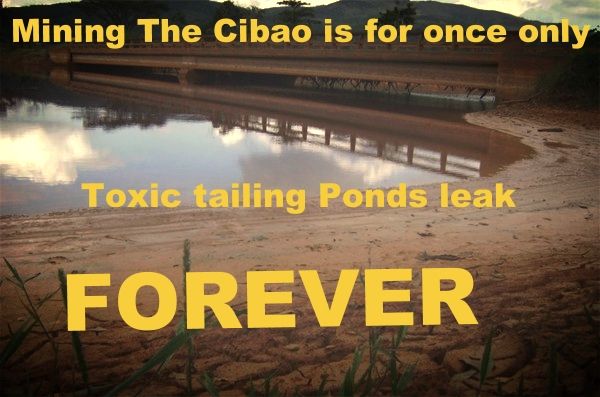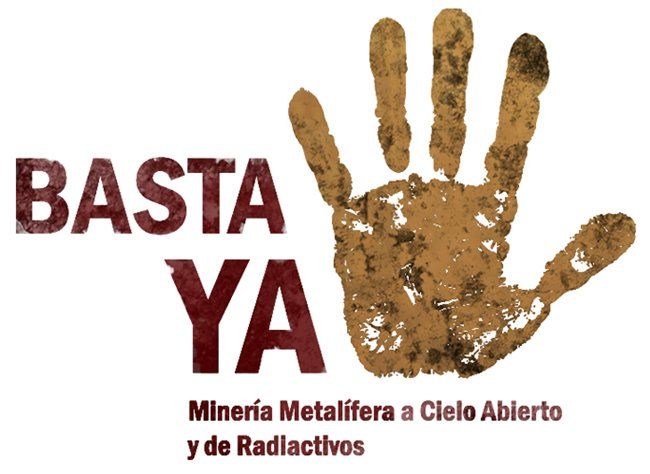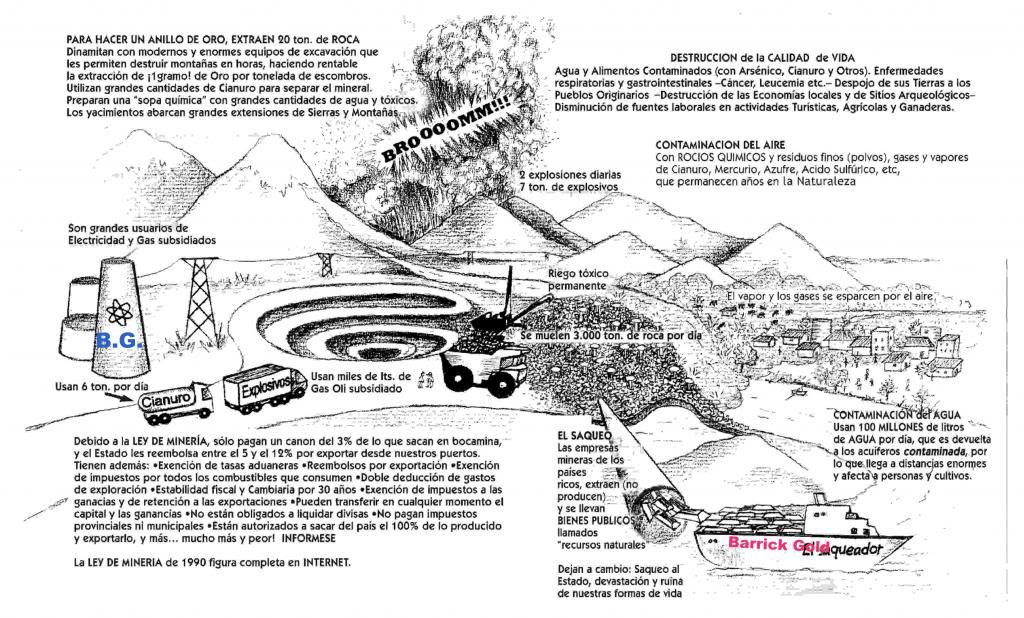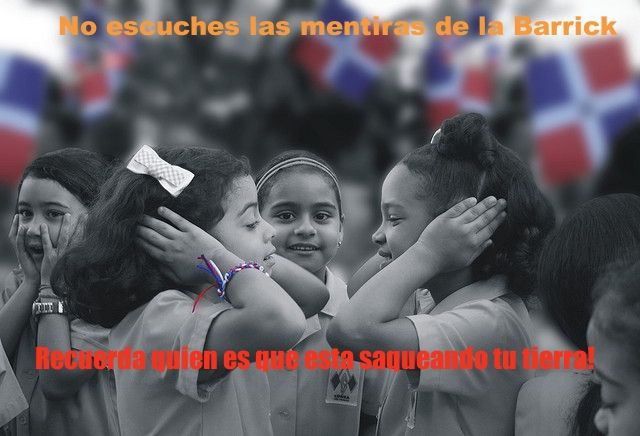Barrick Gold Problems in the americas
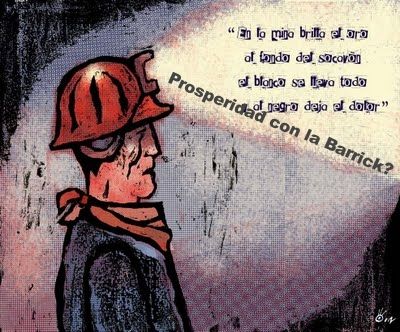
In Reno Nevada, Barrick Gold failed to report that it released toxic chemicals including mercury, cyanide and lead. The Dominican Republic asked for a review of a contract it had with the Canadian mining company that could threaten the government.
The Chilean Story
A month prior to the Atacama Water Board in Chile was to request that Barrick Gold Mines Corporation should be fined for not fulfilling its promise to protect the glaciers within the borders of its bi-national Chile-Argentina project, called Pascua Lama, Barrick was fined in Reno, Nevada for releasing toxic chemical substances.
Days after a Chilean court upheld the injunction rendering their multi-billion dollar investment indefinitely stalled, Barrick Gold executives said in a shareholders meeting in Toronto that they might abandon the Pascua-Lama project altogether.

Three high-level executives from Barrick's South America branch resigned Thursday, further complicating the mining giant’s South American operations. The resignations include the company’s regional president, Guillermo Caló. Robert Mayne-Nicholls and Rodrigo Jiménez, the director of operations and the regional vice president, also announced their departures.
In the Canadian company’s annual report, Chairman Peter Munk lamented the unanticipated financial issues at the mine, though he prioritized its rebound.
“We suffered a significant delay and a major cost overrun at our flagship Pascua-Lama project on the border of Chile and Argentina,” Munk said in the report. “Since that fact surfaced — so unexpectedly — the main focus of our company, at every level, has been directed at ensuring that this project will meet its new cost and schedule estimate.”
A 48 percent decline in the company’s share price and disappointing gold prices have characterized a challenging year for Barrick, Reuters reported Wednesday.
The court of appeals in Chile’s northern Copiapó Region granted an indigenous community’s request to suspend the mine’s operations April 10. Minera Nevada, S.P.A., the Barrick subsidiary operating Pascua-Lama, has deflected allegations of negligent environmental behavior for most of its decade-long existence on the border between Argentina and Chile.
The American Story
According to the Huffington Post, the Environmental Protection Agency ordered three mines in northern Nevada to pay a total of $618,000 for failing to report this release of toxic chemicals, including cyanide, lead and mercury from 2005-08.
All three mines are subsidiaries of the Toronto-based Barrick Gold Corp. — Barrick Cortez Inc.'s Cortez Gold Mine near Crescent Valley, Barrick Gold US Inc.'s Ruby Hill Gold Mine near Eureka and Homestake Mining Co.'s Bald Mountain Gold Mine near the Ruby Lake National Wildlife Refuge, according to the Huffington Post.
The three agreed to pay a total of $278,000 in fines and spend an additional $340,000 on an environmentally beneficial project as part of a settlement for allegedly underestimating reports of their toxic release inventory required under the federal Emergency Planning and Community Right-to-Know Act, EPA officials said.
"Cyanide, lead and mercury used at these mines have the potential to pose a health threat," said Jared Blumenfeld, EPA's regional administrator for the Pacific Southwest Region, based in San Francisco.
"We insist on accurate reporting of chemical releases so that citizens have a clear idea of the risk from the facilities near their communities," said Blumenfeld.
The supplemental project will be conducted at the Cortez mine to identify the metal compounds formed in its oxide mill process and test methods to verify the quantities of new chemical compounds manufactured during the process.
The companies also agreed to perform audits at all other U.S. mining operations Barrick owns in Nevada and Montana and to determine if any reporting violations occurred and if so pay a $10,000 penalty per violation up to a total of $250,000
"Nonetheless, to achieve regulatory certainty regarding its TRI obligations, Barrick has agreed to enter into a settlement agreement with the EPA," said Louis Schack, director of communications for Barrick Gold of North America, based in Salt Lake City, Utah.
"Crumbs for your gold, the dominican story”
Meanwhile, in the Dominican Republic, independent deputy Carlos Gabriel García commented on Barrick Gold’s Manuel Rocha’s insistence that the government must comply with its agreement with Barrick. Gabriel García referred to this as “challenging” the national interest.
According to the Dominican portal, El Nacional, Deputy García believes that Rocha aims to silence the domestic sectors that have spoken out in favor of revising the agreement with Barrick, in which the Dominican government “will receive crumbs in exchange for its gold.”
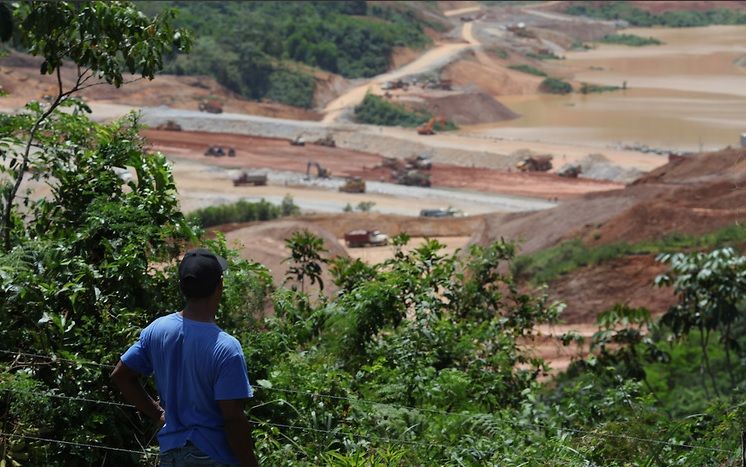
He said it seems that Rocha is unaware that the company Place Dome was the one that won the bid to explore for gold and that the agreement signed back in 2002 was beneficial to the Dominican government.
The author of the draft resolution of the Chamber of Deputies that asks the government for a revision of the agreement with Barrick, believes that “this agreement cannot be above the interests of the country.”
Rocha, Barrick Gold representative in the DR, defended the 2009 gold exploration agreement with the government. “Since the beginning, we have been very clear that this contract was negotiated in a process that went on for nearly 2 years, between the government and the company along with an expert brought in from Europe, France specifically, and from the Inter-American Development Bank,” he said.
But in fact that gold exploration agreement is a big scam , with so many picky details that dominicans will never see a dime out of the mine, and the dominicans see themselves in the eyes of Chile, where Barrick Gold spend 16 years exploiting a Chilean mines, and Barrick Gold NEVER pay a dime out of it.
The Chamber of Deputies decided that three commissions will present a report on the agreement with Barrick Gold. Mateo Aquino Febrillet, Rector of the Autonomous University of Santo Domingo (UASD), is one of the illustrious Dominicans who also supports the revision of the agreement.
In the Dominican Republic, meanwhile, the soaring price of gold has the government wanting more from the Pueblo Viejo mine, which has 20 million ounces of gold reserves as well as silver, copper and zinc.
Barrick owns 60 percent of the venture and Goldcorp Inc. of Vancouver, British Columbia, owns 40 percent. The companies reopened the mine last year after investing nearly $4 billion, the largest direct foreign investment ever in the Dominican Republic, and have estimated it will eventually pay about $7 billion to the government.
But President Danilo Medina and Congress have yet to see any money. They want to rewrite the 25-year contract, which promises royalties only after the two Canadian companies recoup their investment and the venture's profits rise above 10 percent.
Barrick's executives "have to change their attitude, because if they don't, the president has told them: 'Either you negotiate or more taxes will be imposed,'" said Ramon Peralta, Medina's administrative minister.
President Danilo Medina’s "prudent deadline" issued to Barrick Gold Corp to renegotiate the gold mining contract expires today and has the population on edge awaiting the outcome of the standoff between the government and the Canada-based company which operates the facility at Pueblo Viejo (central), El Caribe reports.
It said Medina is expected to refer to the topic this week before leaving for the summit in Costa Rica.
The chief executive is expected to announce the result of the talks before month’s end, according to Presidency Administrative minister José Ramón Peralta.
Medina’s deadline to Barrick Gold formed part of his speech to Congress on February 27, and has since been accompanied by the retention of several shipments of ore at Customs, on violations including the miner’s mistaken ship manifest of the precious metal’s country-of-origin ( smuggling).
In country after country, the world's biggest miners are facing new environmental standards, confronting changing tax and currency laws and defending long-term contracts they thought were written in stone.
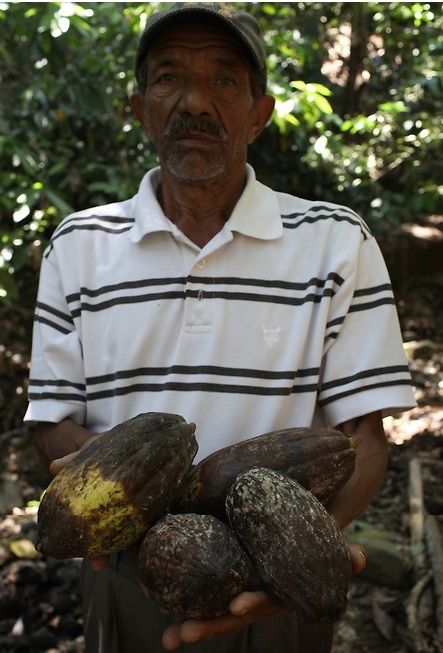
Barrick gold only provides misery and toxic pollution to the communities were they go.They use tons of cyanide and mercury in their operations for gold extraction, regardless of poor peasants, crops, river and cattle in the exploited areas.
The situation now is just unbearable for the affected communities..And there are a lot of riots every week in different part of Dominican republic because of that.
They have a long history of scams, heavy pollution, illness, bribery and heavy metal contamination.
In a small island like Dominican Republic the consequences are simply lethal...
They are just destroying the island, were no other kind of human, vegetable or animal kind of life can surface out of there in any circumstances...
Say no to Barrick Gold TODAY !
